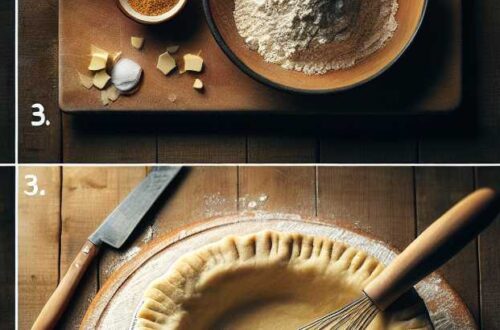Mexican Sweet Bread Traditions

1. Historical origins of Mexican sweet bread
Title: The Tasty Time-Traveling Tale of the Mexican Sweet Bread
Ladies and Gentlemen, gather around as we embark on a delightful culinary voyage to the birthplace of the pleasurable palate-pleasers – the crunchy, sugary, mouthwatering Mexican Sweet Breads. As you take your first bite of this enchanting delicacy, you don’t just taste its sweet magnificence; you taste a slice of history dipped into the rich cream of culture. If bread could speak, oh, the tantalizing tales it would tell!
Let’s shimmy back to the year 1325, where the mighty Aztecs commanded the stage in certain areas. They believed that the heart was both spiritually and physically vital as it was the source of heat and energy. This inspired culinary creations like the extraordinary ‘tlaxcala’, a heart-shaped bread adorned with feathers instead of sugar! Don’t mind us Aztecs, we prefer our sweet feathery delights stick to the tropical birds, thank you very much!
Fast forward to the 16th century, our dear friend Hernán Cortés metaphorically crash landed and invited the Spanish in for a little tea party. This cultural merge stirred up the traditional culinary pot of Mexico in an interesting way. While the Aztecs had maize and beans, the Spanish brought wheat that caused a fermentation of creativity in the kitchen.
Now, you might be thinking that bread is just bread. But in Mexico, bread has a different language. The panaderos, or bread masters, venture into their craft akin to an artist with their canvas – tender, loving, and meticulous. Therefore, the bread that emerged from the Spanish influence and the Aztec heart-stitched tradition was anything but regular; ladies and gents, the pan dulce was born.
But here’s where it gets sugary and spicy, folks.
“”Then make a good meal, Master Revyngton, said Hobbes, setting a loaf of brown bread, some cheese, and a jack of ale, for if not thou’lt feel the want of it ere long.””
~ Percy F. Westerman–A Project
Gutenberg eBook, the Golden Spurs
The 1860s rolled around, and with it, the French planted their flags in Mexico for a short stint. Now, get this – they brought something other than their military artillery. They packed the sumptuous croissants and pastries that we guiltily gorge on! The Mexican bakers took these imported ideas of beauty-chef excellence, spun them around, tossed in some salsa-infused creativity, and ‘voila!’. Mexican sweet bread took on new, delicious, moustache-tickling, mesmerizing forms.
Today, we can enjoy these sweet-dough expressions of history in a whirlwind of approximately 2,000 – yes, 2,000 – shapes, colors, and flavors! If that isn’t sensory overload, I don’t know what is. From the vibrant concha, resembling a beautiful seashell and dusted with granulated sugar to capture that beachy sparkle; to the elote, crafted to mimic an ear of corn (but way sweeter and easier on the teeth), the variety is as vast as the Mexican landscape itself!
So, next time you bite into that fluffy, sweet, tantalizing piece of Mexican sweet bread, remember you are tasting a blend of Aztec ambition, Spanish influence, French sophistication, and the indefatigable spirit of Mexico. What a delicious journey through time!
This form of edible art, forged in the kaleidoscope of history, kneaded with culture and baked in tradition is not merely for consumption – it’s a feast for the senses, a delectable dance between history and taste. Trust us; your taste buds won’t ever want to come off this sugar-spun conga line of culinary delight! Let’s roll with these rolls and sprinkle a little joie de vivre in the bakery of life. Happy munching, folks!
Read More Here: 1. Historical Origins Of Mexican Sweet Bread

2. Symbolism in Mexican sweet bread traditions
Title: Rolling in Sweet, Secret Dough: Symbolism in Mexican Sweet Bread Traditions.
If there were a worldwide competition for the best bread whisperers, surely, our Mexican heroes of dough, sugar, and sparkly toppings would rise to the top! Craving a sneak peek into the bakery—an integral emblem of rich Mexican tradition? Put on your oven mitts, grab your rolling pin, and brace for a sugar-dusted adventure into the warming heart of the breadoven—we’re rolling deep into the secret language of Mexican sweet bread traditions!
Mexican sweet bread, lovingly known as pan dulce, meaning ‘sweet bread,’ serves an essential role in the complex and flavorful symphony that is Mexican cuisine and tradition. But pan dulce is not your average bread, oh no—it is more than just a delightful treat, it’s a lexicon of symbolism! Each one of those numerous enchanting shapes tells a story—you just need to know the sweet, sweet dialect.
First stop on this delectable tour, we have Conchas. Ah yes, Conchas! These pastries offer a symbolic nod to marine life by mimicking the shape of seashells with their scored tops. Why a seashell, I hear you ask? Possibly because the heavens opened one day and whispered to a baker, You know what would be hilarious? A bread that looks like a seashell! Well, not really. It is believed to be a tribute to Mexico’s long, intricate coastline, embodying the essence of the aquatic in the kitchen’s heart. Fun fact: when you listen closely to a Concha, you can hear the ocean… or your stomach growling.
Next up, the famous Orejas, or ‘elephant ears,’ taking the name quite literally, are delicate, flaky pastries shaped like… you guessed it, mammoth ears! Well, luckily not mammoth in size, but rather straightforward as a winking tribute to our elephantine companions. Orejas are not just a tongue-in-cheek gesture to the animal kingdom but also celebrate the mastery of the bakery, where paper-thin pastry layers rise into a puff of perfection. Now that’s some serious dough-votion!
The wonderfully named Cuernitos – very loosely translated as ‘adorably tiny horns,’ are crescent-shaped delights.
“ORIGIN OF FAIRY TALES–THE ARYAN RACE: ITS CHARACTERISTICS, ITS TRADITIONS, AND ITS MIGRATIONS CHAPTER II”
~ John Thackray Bunce, Fairy Tales; Their Origin and Meaning
With their quirky arc, these delectable titbits could be symbolic of phases of the lunar cycle, a dash of celestial beauty in your morning caffeine accompaniment. A bite of Cuernito, and voila, you’re over the moon!
Polvorones, also known as Mexican wedding cookies, have a royal, round shape that signifies unity and everlasting love. Best eaten after you say ‘I do,’ or on any given Tuesday, because they’re simply too yum to resist.
Last but not least, the ghoulish bread named Pan de Muerto symbolizes the Day of the Dead celebration. This doughy treat, decorated to resemble crossed bones, honors the memory of passed loved ones. It’s a sweet reminder that our departed pals are never really loafing around—they’re just on the other slice of life.
In the end, Mexican sweet bread traditions don’t just tickle your taste buds but also bloom in an everlasting dance of symbols and shared heritage. It’s proof that bread, in all its delicate shapes, sizes, and flavors, is more than simple sustenance—it’s a story; it’s home, tradition, hilarity, and a trove of memories bundled up in a delightfully compact package, bursting with flavor.
So, the next time you find yourself biting into a piece of pan dulce, remember, it’s more than just a guilty pleasure. It’s a custodian of stories spun in sugar, dough, and a sprinkle of Mexican culture. Happy sugar-coated breadventure!
Read More Here: 2. Symbolism In Mexican Sweet Bread Traditions

3. Varieties and preparation techniques of Mexican sweet bread
Title: Hunkering Down with the Holy Trinity of Mexican Sweet Bread: Conchas, Pan de Muerto, and Orejas
Have you ever entered a panadería (a Mexican bakery) and felt like you were catapulted into an enchanting world of colorful confections? Welcome to the sugar-coated heaven of Mexican sweet bread, or pan dulce, as it’s known to the locals. These delectable treats come in more than 2,000 varieties, but for the sake of our sanity (and the size of our waistlines), we’ll mainly focus on the Holy Trinity: Conchas, Pan de Muerto, and Orejas. Strap on your aprons, folks! It’s going to be an exhilarating, sugar-dusted ride!
1. Conchas: The Shelled Sweetheart
Let’s start with the celebrity of the pan dulce world – the Concha. With its bright colors and shell-like design (Concha means ‘shell’ in Spanish), it practically screams for your attention among its pan dulce brethren. Equally great for breakfast or a late-night snack, Conchas pack that ‘carb-titude’ we all secretly love!
Let’s dive into the making of a concha, shall we? Conchas are your basic sweet bread but with an outfit that could win a Project Runway contest. This bread uses the common suspects: yeast, sugar, eggs, and flour. But what if Conchas just decided to ‘dress up’ one day? Well, that’s when a sugar paste, typically flavored with chocolate or vanilla, is piped onto each dough ball in that iconic shell pattern. Once baked, you’ll have a sweet roll with a crunchy topping that might just beat your grandma’s cookies!
2. Pan de Muerto: Bread of the Dead (But So Lively!)
Here’s the paradoxical charm, a bread that celebrates death but in the most vibrant way possible.
“Inside of half an hour, Ben had seen to it that Larry, Luke, and Boxer were all made comfortable, and then, hastily swallowing a bowl of coffee and some bread and meat, he hurried after his command, which was threshing the jungle just outside of San Isidro for scattered bands of the enemy such as the young captain and his party had met”
~ Edward Stratemeyer, Illustrated by A., the Jungle
Pan de Muerto or Day of the Dead Bread is traditionally baked during the Dia de Los Muertos celebrations in memory of the departed. But trust us, the taste is anything but morose — it’s enough to wake the dead!
Preparation involves yeast dough enriched with plenty of eggs – creating a dough so yellow you might need sunglasses while kneading. The dough is then flavored with orange zest and anise, embodying a blissful marriage of freshness and sweetness. Once baked, the bread is brushed generously with melted butter and sprinkles of sugar, producing a sweet top layer that will have you believing that there certainly is life after death!
3. Orejas: Sweet ‘Earful’ of Deliciousness
Ah, Orejas. Named after a poor animal’s anatomy part (they resemble ‘ears’ – hence the name), these puff pastry bites are simplicity embodied at its best yet sugary enough to give your taste buds a memorable twang.
The magic lies in its simplicity – Orejas are skillfully crafted from folded, sugar-encrusted puff pastry slices that are baked until caramelized and flaky. The result is a delightfully crispy bite that’s feather-light yet rich enough to make you go, ‘Ear-y God, these are good!’
So there you have it – the Holy Trinity of Mexican sweet bread! Remember, this bakery journey is not just about making or enjoying these delicious baked goods, but also about immersing yourself in the vibrant and flavorful Mexican culture. So, why not jumpstart your day by kneading some dough? Rinse those rolling pins and brace yourself for a culinary adventure! Bready or not, here you crumb!
Learn More: 3. Varieties And Preparation Techniques Of Mexican Sweet Bread





